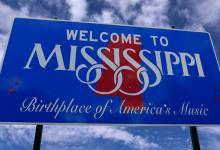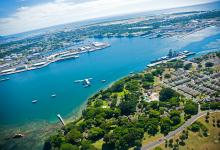10 Most Traveled Bridges in North Carolina In Desperately Poor Condition

©Mihai_Andritoiu/Shutterstock.com
There are thousands of bridges in . In fact, there are an estimated bridges in the state. Out of these, most of them are uncovered, which makes them more susceptible to weather and erosion. Constant traffic, such as what you’d see on the most traveled bridges in North Carolina, also leads to degradation.
Many of the bridges that are in poor condition are widely used and large. This is because they encounter a lot of damage from frequent use. They also are harder to repair because the shutdown of these bridges isn’t easy due to all of the traffic that needs to go through daily.
If you want to know more about the bridges in North Carolina, and what makes them be reported as poor condition, continue reading below. This list covers the 10 bridges in North Carolina in desperately poor condition that are highly traveled. All of the information comes from bridge inspection reports on .
What Is a Structurally Deficient Bridge?
Most of the time, “structurally deficient” bridges are simply bridges that need frequent inspections and monitoring. It also means that they’re placed first on the list for repairs.
There is usually a ranking system for structurally deficient bridges, between zero and nine. The higher the number, the better the bridge structure. A structurally deficient bridge is when the condition is less than 50%. On the zero to nine scale, a structurally deficient bridge is ranked at a four or less for at least some , such as the deck, substructure, or superstructure.
Are Structurally Deficient Bridges Safe to Cross?
For the most part, structurally deficient bridges are still safe to cross. It simply means that they need repairs or extra measures to keep safety standards for the bridge high.
In some cases, depending on the severity of the structural deficiencies, the bridge may get a lower weight rating. For example, while standard cars may be able to cross, vehicles like semis and maybe even RVs may have to use a different path to get to their destination as the vehicles are too heavy to be deemed safe to cross the bridge.
In more serious cases, the bridge may be shut down until repairs can be completed to make it safe again. However, these bridges usually rank below structurally deficient, and fall into a category known as . Bridges may also have to be rehabilitated in some situations. involves major safety defect repairs and restoration of the structural integrity.
How Many Structurally Deficient Bridges Are in North Carolina?
In 2023, there were an estimated 1,336 bridges that were deemed structurally deficient in North Carolina, according to a report by . This breaks down to a total of 7.1% of all bridges in North Carolina. In addition, there are a total of 5,415 bridges that the report mentioned could do with repairs, though not all of them were yet structurally deficient.
These numbers mean that North Carolina is ranked 19th for the percentage of structurally deficient bridges compared to total bridges in the US. The number one state is . It also ranks 10th for a total number of structurally deficient bridges, with ranking number one.
Though this is still quite a bit, it’s a vast improvement from 2019. In 2019, North Carolina had a total of 1,714 structurally deficient brides. This is a total of 9.3% of all bridges in North Carolina. The total number of bridges that could use repairs in 2019 was 6,026.
Out of these numbers, this article will provide you with information about the 10 bridges in North Carolina that need repairs and are widely traveled. They aren’t the bridges most in need of repair, but ones on major roads that see heavy vehicle traffic every day.
Why Are So Many Bridges in Poor Condition?
It may seem like it’s due to poor maintenance that the bridges in North Carolina are in poor condition, but that’s not the case. The North Carolina Department of Transportation takes these bridges very seriously. They inspect over 18,000 bridges at a minimum of every two years. If one is considered too unsafe for drivers to cross, it’s shut down that very day the inspection is done.
Cost plays a huge role in how many bridges get fixed. It would take an estimated $4 billion to change every bridge in the state to a good standing. To keep up the quality and integrity of every bridge would cost $433 million annually.
Money isn’t the only issue. The bridges on this list have another problem that makes repairs difficult. Because some of the most traveled bridges in North Carolina are structurally deficient, taking the time to do the repairs isn’t always easy. It usually involves major traffic slowdowns or complete rerouting for many travelers.
That doesn’t mean it’s hopeless. North Carolina Department of Transportation does have a goal to get at least 70% of its bridges in good standing as soon as possible. But it will take time, and lead to some rough traffic jams in the meantime.
Which Counties Have the Most Structurally Deficient Bridges in North Carolina?
Most of the structurally deficient bridges in North Carolina were located in and Durham counties in 2019. Some of these bridges are traveled over by hundreds of thousands of cars a day. They were the focus of bridge repairs in the following years.
In 2023, the most common counties are Mecklenburg, Forsyth, and Guilford for most daily crossings on structurally deficient bridges. They are old bridges, built in the 1950s and 60s, in some major areas. While they aren’t as used as the Wake and Durham county bridges, they are still some of the most traveled bridges in North Carolina.
The Most Traveled Bridges in North Carolina That Could Use an Update
So you know know what a structurally deficient bridge is, and how they work. Let’s take a look at some of the most traveled bridges in North Carolina that could use repairs in 2023.
1. I277 & NC16 over US29/Nc49 (Graham St.)

©Sean Pavone/Shutterstock.com
The first bridge on this list is one in Charlotte, North Carolina. This makes means the bridge is located in Mecklenburg County. It was last inspected in 2022 and deemed structurally deficient.
Specifically, the structural evaluation, substructure, and underclear are rated at a four, which makes them structurally deficient. The deck itself is a six, which means it meets the minimum criteria and isn’t a danger.
The bridge was first built in 1971. Its average daily traffic in 2019 was 115,000 people. 16% of the vehicles are trucks like semis. However, by 2040, the average daily traffic is expected to reach 230,000 vehicles. It’s considered an urban interstate bridge.
2. I277 & NC16 over Brevard Street

©Randy Kostichka/Shutterstock.com
The next bridge on this list is also in Charlotte, North Carolina in Mecklenburg County. This one goes over Brevard Street. It was inspected in July 2022 and was deemed structurally deficient.
The substructure, underclear, and structural evaluation are listed as a four out of nine. The deck and superstructure are a five, while the deck geometry itself is in excellent condition with a nine rating. Even though the deck geometry is a nine, the four ratings on some other systems make it still structurally deficient.
This bridge is a bit older than the first, built in 1967. It has an estimated 94,500 vehicles crossing it daily in 2019 with 16% of the vehicles being trucks. By 2040, the estimated daily traffic should be around 189,000. It’s also considered an urban interstate bridge.
3. I277 & NC16 over North College Street

©Sean Pavone/Shutterstock.com
The third bridge is also in Charlotte. It’s on the same road. But this time, the bridge is the one that crosses North College Street. This bridge was deemed structurally deficient in June 2022.
Like the last bridge, the deck geometry is at a maximum rating of nine. However, the substructure, underclear, and structural evaluation are a four. The deck and superstructure are a six.
This bridge was also built in 1967. There are roughly 94,500 people a day traveling across the bridge with 16% of all vehicles being truck traffic. By 2040, that number could increase to 189,000. It’s also an urban interstate bridge.
4. I85 over Abernathy Creek
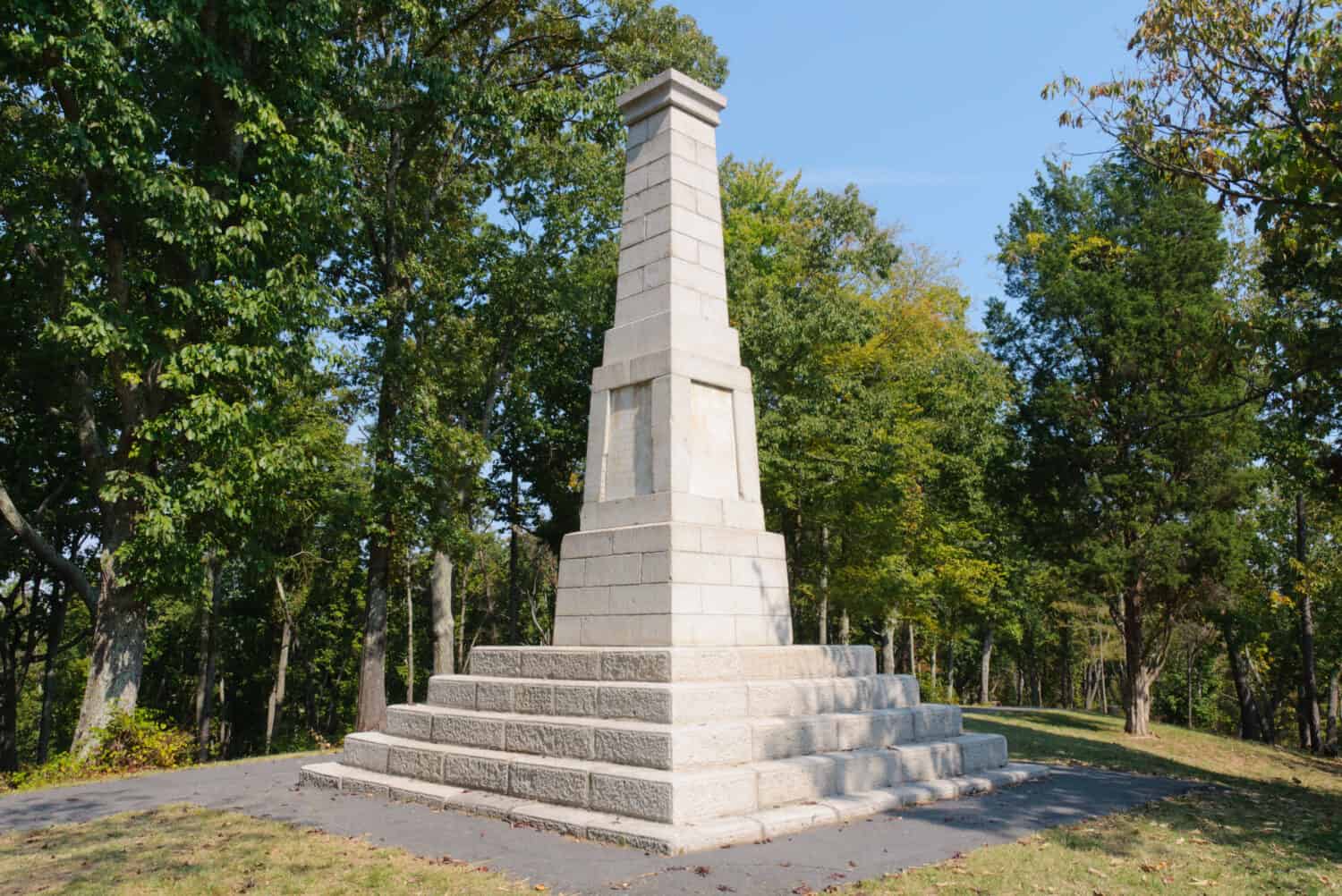
©Zack Frank/Shutterstock.com
The fourth bridge breaks away from the first three. It’s on an interstate, in Between Kings Mountain and Jenkins Heights. This bridge is in Gaston County, North Carolina. The survey for this bridge was done in July 2022.
Since this is a smaller bridge, it wasn’t inspected in as much detail. However, the structural evaluation was found to be ranked as a four, which makes it structurally deficient. The culverts and channel protection are also ranked a four. Some of the main issues include river control, debris, cracks, and heavy erosion.
The bridge is a little older than the others, built in 1962. Currently, as of 2019, 80,000 vehicles drive on this stretch of the interstate. By 2040, the number is expected to double to 160,000. 16% of vehicles are heavier trucks and vehicles.
5. US52 over 25th Street
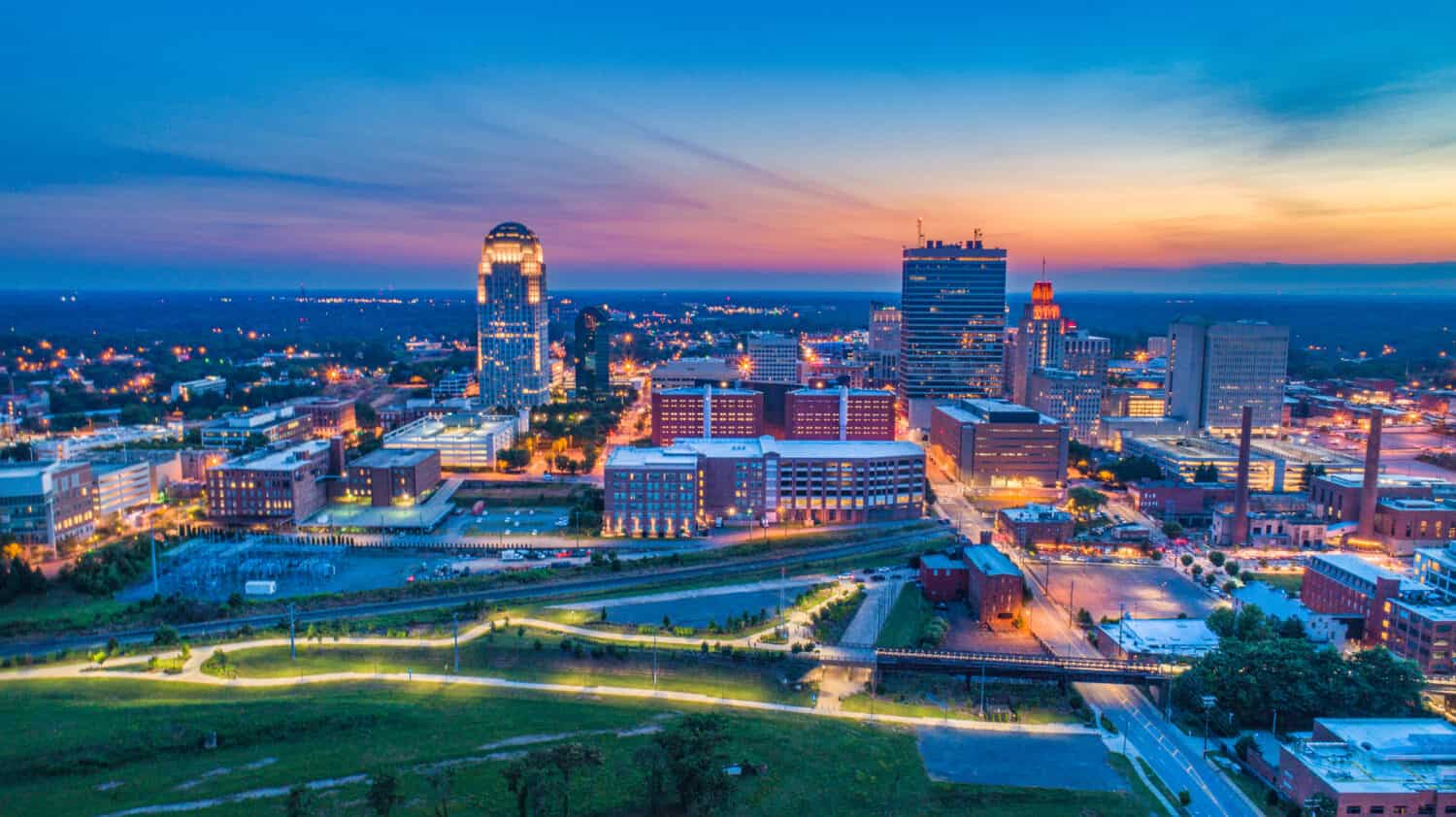
©Kevin Ruck/Shutterstock.com
This bridge is also located in Forsyth County, North Carolina. It’s in the Winston-Salem area, close to North Winston. This bridge survey was completed in May of 2022.
Similar to previous bridges, there are a few places where the bridge ranks a four. Specifically, in this case, the substructure, deck, and structural evaluation are a four. The rating comes from deterioration of the bridge and severe section loss. The Superstructure is a six due to some deterioration. The underclear is a five, and the deck geometry is a nine.
This bridge was built in 1964. In 2019, over 79,000 people drove on the bridge per day. 12% of all traffic is truck traffic. By 2040, an expected 158,000 will cross the bridge daily.
6. US52 over 28th Street

©Sean Pavone/Shutterstock.com
Just a few roads away from the last bridge is this bridge over 28th Street. It was also built in 1964 in the North Winston area of Winston-Salem. This bridge was similarly built in 1964. This inspection was done in May of 2022.
This bridge’s ratings are ranked lower than the other bridge. The substructure, and structural evaluation are a four due to advanced section loss and deterioration. The underclear and deck are a five due to some cracking. The superstructure and deck geometry are ranked a six.
It has a similar amount of traffic to the last bridge, with 79,000 people crossing it daily. 12% of those are truck traffic. Additionally, the expected traffic in 2040 is 158,000.
As you might guess, several bridges in this area are considered structurally deficient. However, these two are the ones with the highest traffic in the area. There are also several that are shut down or are close to shutting down due to needing immediate repair or corrective action.
7. I40 Bus over Brushy Fork Creek
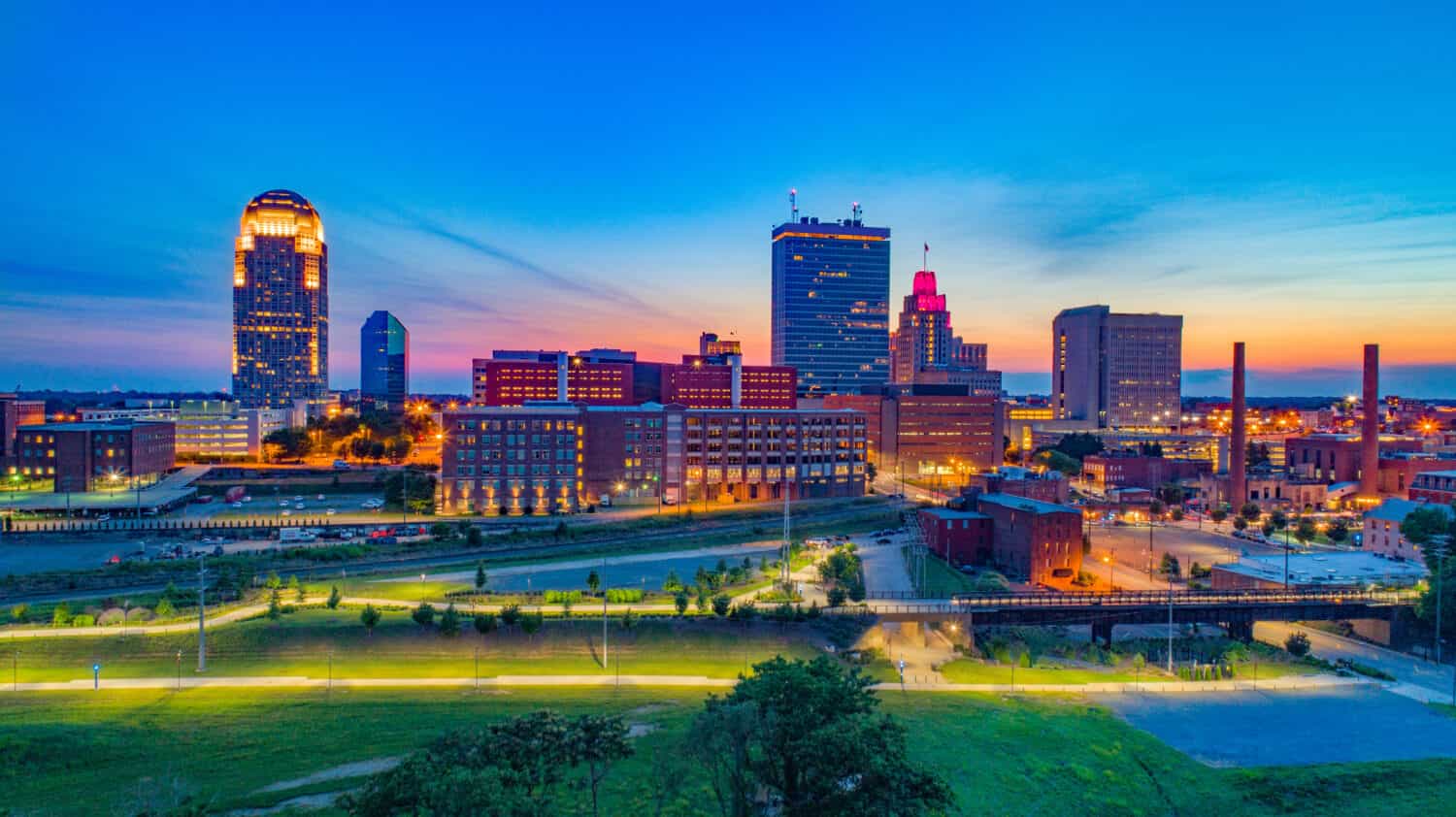
©Kevin Ruck/Shutterstock.com
In a similar area, but more to the east, is the I40. The bridge in question is over the Brushy Fork Creek. It’s the oldest bridge so far on this list, built in 1958. It was reconstructed in 1989.
The substructure and structural evaluation are fours due to advanced section loss. The deck is a five, the superstructure is a six, and the deck geometry is a seven. Since it crosses over water, the waterway adequacy is also measured. In these areas, the bridge ranks rather well, with an eight or a seven in all sections.
73,000 people cross this bridge daily. The truck traffic accounts for 12% of all daily traffic. By 2040, the number of daily drivers is expected to increase to 146,000.
This area also has a lot of structurally deficient bridges and some that need immediate repair. This is one of the most used bridges in the area, however. It’s still in the Winston-Salem area but is more in the East Winston area.
8. Nc67 over US421

©Sean Pavone/Shutterstock.com
Another one of the most traveled bridges in North Carolina in desperate need of repair is a part of the Nc67. This one is located in West Oaks in Forsyth County. This is a bridge that goes over another major road, the US 421. It was built in 1958 and reconstructed in 1997.
Unfortunately, despite being repaired almost 40 years after build built, the bridge still is considered structurally deficient. It’s ranked at a four for the deck, superstructure, and structural evaluation. While the deck geometry is a nine, the substructure is a five.
This bridge has a pretty glaring issue too. The underclear is a three out of nine. It’s said to need high-priority corrective actions due to structural deficiencies. This is hopefully one of the bridges to be repaired quite soon.
This is especially a problem when there are 66,000 drivers a day on the bridge. 12% of them are trucks and heavy vehicles, which may put unnecessary strain on the bridge. The sooner repairs can be done, the better, as 132,000 people are expected to be using the bridge daily by 2040.
9. US421 over Little Creek
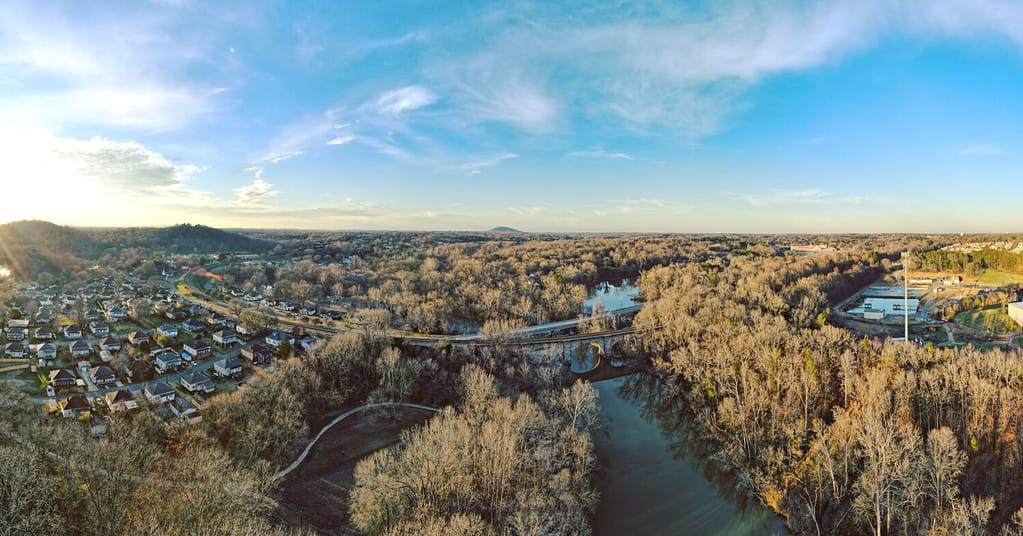
©Area42dronography/Shutterstock.com
This bridge ranks a little better than the last one. It’s still in Forsyth, bear Brook Hollow on US421. This one has a ranking of four for structural evaluation and culverts near the river. There’s a lot of scaling, erosion, and distortion of the bridge. Thankfully, the rest of the bridge ranks at a seven or an eight.
This bridge was built in 1960 and reconstructed in 1991. It sees over 62,000 vehicles going over it a day, and 12% of those are truck traffic. By 2040, over 124,000 people could be using this bridge a day.
10. Sr2254 over Southern Railroad
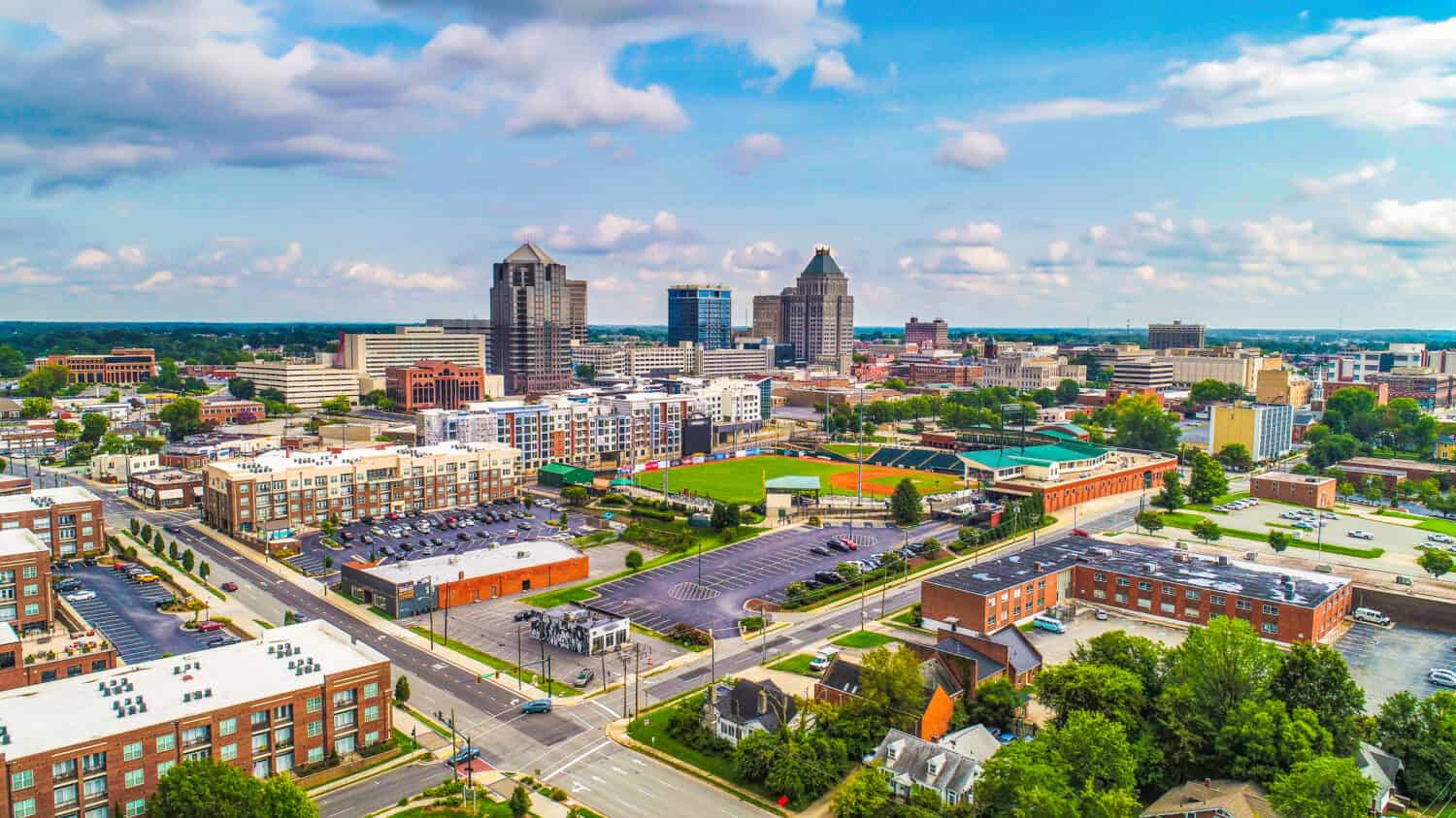
©Kevin Ruck/Shutterstock.com
The Sr2254 over the Southern Railroad is an example of a structurally deficient bridge that is nearing being very unsafe. It’s ranked as a three on its structural evaluation. This means that it needs significant corrective action as soon as possible.
Specifically, the superstructure is what needs a lot of work. There’s a lot of deterioration and fatigue cracks. The deck geometry is also pretty bad, though it’s still considered safe at a ranking of four. The substructure is a five, the deck a six, and the underclear a seven.
With over 52,000 drivers on the bridge a day, it’s important this bridge be placed on the state’s high-priority list. Another 52,000 people are expected to be driving on the road by 2040, so repairs are best done sooner rather than later.
This bridge was built in 1968 and hasn’t yet been reconstructed. It’s in Guilford County, near Lake Daniel. Anyone who lives in the area likely knows that there are at least eight bridges that need some quick repairs in the area and even more that are considered structurally deficient.
Table of the Most Traveled Bridges in Need of Repair in North Carolina
| Bridge Location | Type of Bridge | County | Year Built | Daily Crossings |
|---|---|---|---|---|
| I277 & NC16 over US29/Nc49 (Graham St.) | Urban Interstate | Mecklenburg County | 1971 | 115,000 |
| I277 & NC16 over Brevard Street | Urban Interstate | Mecklenburg County | 1967 | 94,500 |
| I277 & NC16 over North College Street | Urban Interstate | Mecklenburg County | 1967 | 94,500 |
| I85 over Abernathy Creek | Rural Interstate | Gaston | 1962 | 80,000 |
| US52 over 25th Street | Urban freeway/expressway | Forsyth | 1964 | 79,000 |
| US52 over 28th Street | Urban freeway/expressway | Forsyth | 1964 | 79,000 |
| I40 Bus over Brushy Fork Creek | Urban freeway/expressway | Forsyth | 1958 | 73,000 |
| Nc67 over US421 | Urban freeway/expressway | Forsyth | 1959 | 66,000 |
| US421 over Little Creek | Urban freeway/expressway | Forsyth | 1960 | 62,000 |
| Sr2254 over Southern Railroad | Urban freeway/expressway | Guilford | 1968 | 52,000 |


